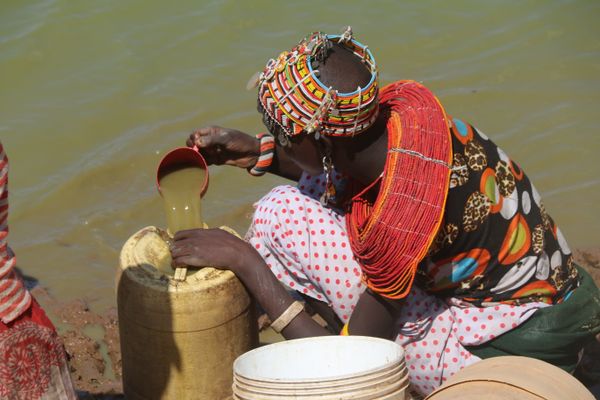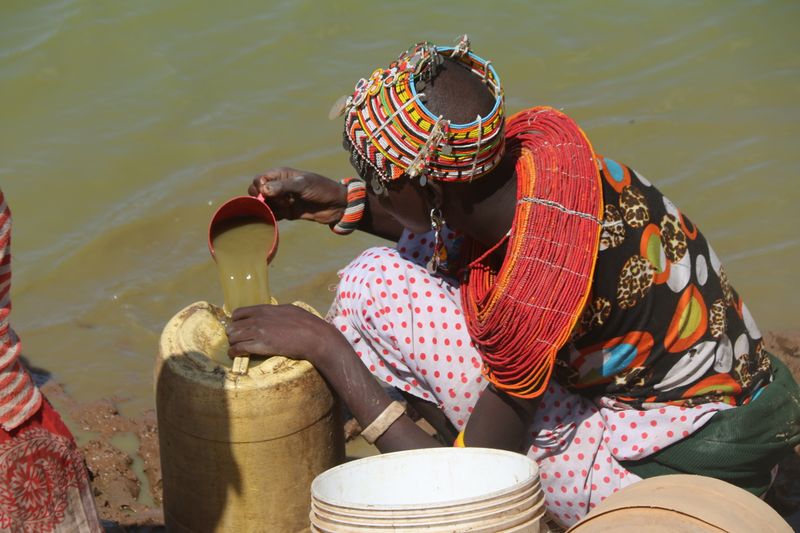Drought in kenya and ethiopia
-
Dates2019 - Ongoing
-
Author
- Topics Daily Life, Contemporary Issues, Documentary
- Location Marsabit, Kenya
In Kenya's Namarei, Laisamis Sub-county, people have resigned to drinking contaminated water from an outdated water pan which is also shared with livestock heightening the risks of spreading of water-borne diseases like cholera and dysentery.
In Yaa Galbo, one of the zones that has been hardest hit by the drought, hundreds of households are surviving on one meal a day. Women and children are trekking over 20kms every day in search of water. An estimated 400 families are in need of emergency assistance.
“In the past, we used to ave some food reserves that kept us going during the dry spells, but this year we have no food stocks, our barns are empty. We are at risk just like our livestock. There are no projects in this area after some NGOs ended their construction work last year. We are only surviving on prayers,” Lokomoru, a woman from Funan Kambi village, told PACIDA staff on the ground.
Goats, sheep, cows and camels are succumbing daily to the worsening drought situation in Marsabit county of Kenya at an alarming rate. The drought crisis is replicated across the four sub-counties of Marsabit County namely Saku, Laisamis, Moyale and North Horr.
Outside of Marsabit county, the situation is not any better, hundred thousands more people have been affected by drought in the nearby counties of Turkana, Isiolo and Mandera. The impact of changing climate conditions, on top of inter-tribal and resource-based conflict, is deeply affecting the people of northern Kenya. Inter-communal resource-based conflicts in the agro-pastoral, and pastoral livelihood zones are likely to increase due to dwindling pasture, browse and water.
A brief by Government of Kenya issued on 15 March 2019 indicates that nation-wide the below-average short rains have increased the food insecure population from 655,800 in August 2018 to 1,111,500, with the top 12 counties having a total of 865,300 food insecure people.
Marsabit County is considered a water scarce county with most of the parts often experiencing extreme water shortage during periodic dry spells and erratic rainfall patterns. Movement of population to areas with water sources puts significant pressure on limited available water supplies trying to match the needs of people. Lack of water is the largest constraint to sustainable livelihoods in many parts of the county.

